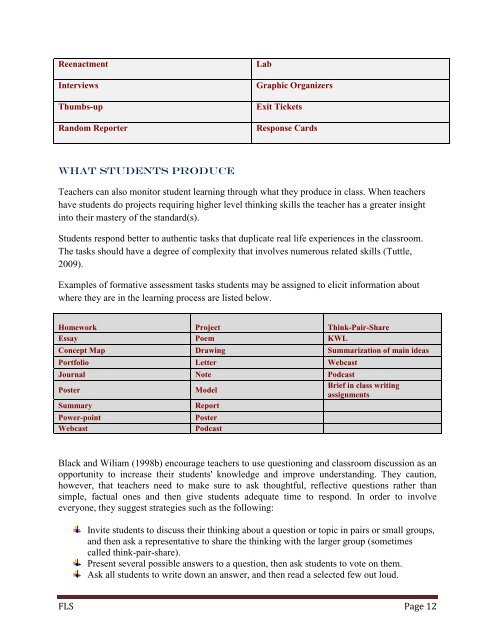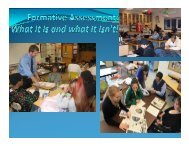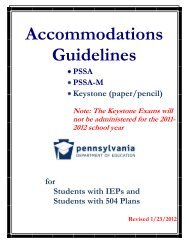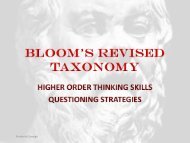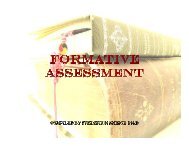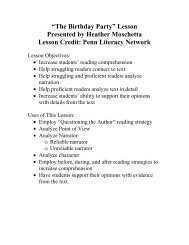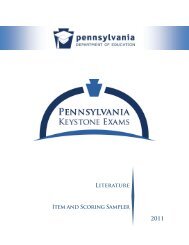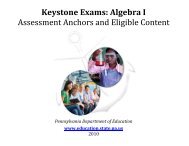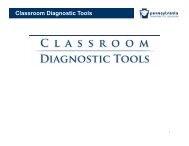FORMATIVE ASSESSMENT (Assessment for learning)
FORMATIVE ASSESSMENT (Assessment for learning)
FORMATIVE ASSESSMENT (Assessment for learning)
You also want an ePaper? Increase the reach of your titles
YUMPU automatically turns print PDFs into web optimized ePapers that Google loves.
Reenactment<br />
Interviews<br />
Thumbs-up<br />
Random Reporter<br />
Lab<br />
Graphic Organizers<br />
Exit Tickets<br />
Response Cards<br />
WHAT STUDENTS PRODUCE<br />
Teachers can also monitor student <strong>learning</strong> through what they produce in class. When teachers<br />
have students do projects requiring higher level thinking skills the teacher has a greater insight<br />
into their mastery of the standard(s).<br />
Students respond better to authentic tasks that duplicate real life experiences in the classroom.<br />
The tasks should have a degree of complexity that involves numerous related skills (Tuttle,<br />
2009).<br />
Examples of <strong>for</strong>mative assessment tasks students may be assigned to elicit in<strong>for</strong>mation about<br />
where they are in the <strong>learning</strong> process are listed below.<br />
Homework Project Think-Pair-Share<br />
Essay Poem KWL<br />
Concept Map Drawing Summarization of main ideas<br />
Portfolio Letter Webcast<br />
Journal Note Podcast<br />
Poster<br />
Model<br />
Brief in class writing<br />
assignments<br />
Summary<br />
Report<br />
Power-point<br />
Webcast<br />
Poster<br />
Podcast<br />
Black and Wiliam (1998b) encourage teachers to use questioning and classroom discussion as an<br />
opportunity to increase their students' knowledge and improve understanding. They caution,<br />
however, that teachers need to make sure to ask thoughtful, reflective questions rather than<br />
simple, factual ones and then give students adequate time to respond. In order to involve<br />
everyone, they suggest strategies such as the following:<br />
Invite students to discuss their thinking about a question or topic in pairs or small groups,<br />
and then ask a representative to share the thinking with the larger group (sometimes<br />
called think-pair-share).<br />
Present several possible answers to a question, then ask students to vote on them.<br />
Ask all students to write down an answer, and then read a selected few out loud.<br />
FLS Page 12


